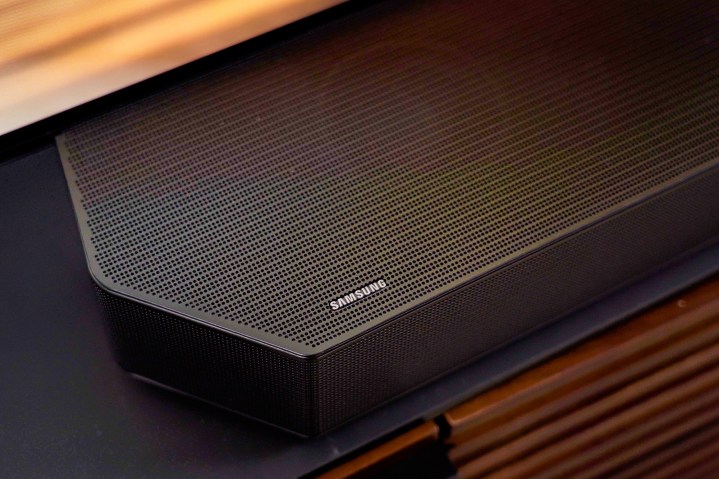
If you’re in search of better audio from your TV, a soundbar is the fastest, easiest — and yes, sometimes the cheapest — solution. But given that there are hundreds of models from dozens of manufacturers, with features and prices that run from basic to bombastic, how on earth are you supposed to pick just one?
That’s where our soundbar reviews come in. We don’t just test them; we think about who they’re for. Tons of EQ settings might be just what the enthusiast wants. But for someone who just wants to finally hear dialogue clearly, it could be overkill. Same thing goes for extra surround speakers and multiple inputs and outputs. And then there’s always the price question: How does it compare to other models that cost about the same?
Want to know more? Here’s how we test soundbars.
More on the process
Unboxing
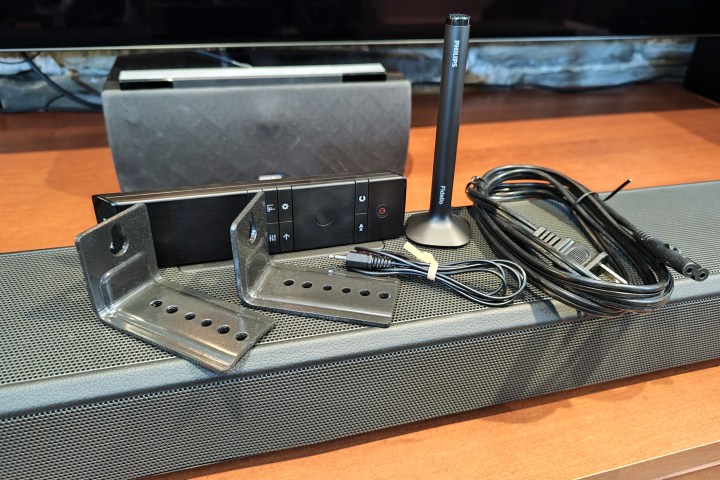
Flashy graphics on the box? That might help a soundbar stand out in a retail store, but we’re more interested in practicalities. Does the box protect the soundbar? Can all of the packaging be easily recycled, or will you simply be adding to your local landfill? Is it just robust enough to survive the journey from Amazon’s warehouse to your home, or is it going to be worth hanging on to?
When we get inside, we’ll take note of what’s included. Did it come with a remote? If so, were batteries included? What about cables? It’s astonishing how many soundbars don’t come with everything you need to connect them, and even more surprisingly, it’s often the more expensive models that cheap out on cables. We’ll make sure there are no surprises.
Full instructions are becoming another victim of cost-cutting measures. For a basic speaker, a simple quick-start diagram is probably all you need, but an advanced home theater replacement needs a detailed user guide. We’ll note when you don’t get it in the box and we’ll also provide our thoughts on whether it’s a well-written document (whether printed or online-only).
Design
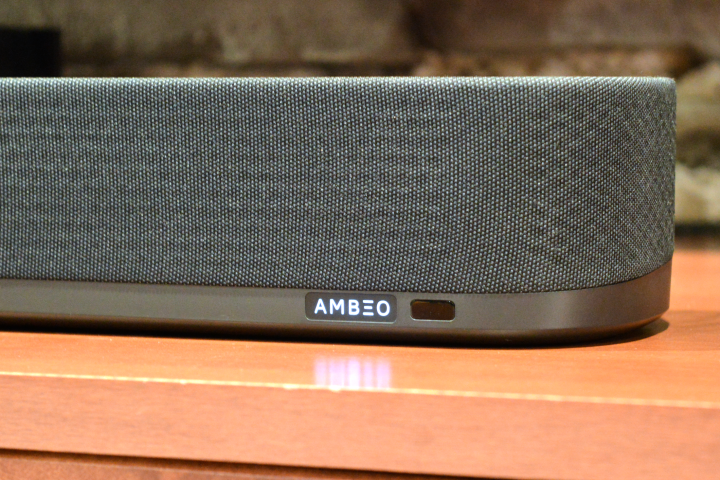
We all have our own ideas when it comes to assessing a soundbar’s looks, but that’s not going stop us from pointing out when a soundbar fails to pass key design considerations. This includes having a built-in display for things like volume level and surround sound mode that doesn’t require you to decode a series of colorful LEDs.
You may only need to plug this thing in once, yet we’ll still take note if the act of connecting the cables and power cord proves tricky. A speaker’s size is always relevant in terms of placement, but it’s especially important for a soundbar. Will it fit on your media stand? Is it unusually tall, running the risk of blocking the bottom of your TV? If it is on the tall side, does it have an infrared repeater (if the speaker blocks the IR receiver on your TV, the answer needs to be yes).
If it came with a wireless subwoofer, how big is it? Will you have trouble finding a spot for it, or has it been designed so beautifully (or functionally) that you’ll want it out in the open?
Can you wall-mount the soundbar below your TV, and if you can, did the company include the mounting brackets you’ll need or are they sold as optional extras (again, the more you pay, the more likely you’ll run into this). The same questions apply to any included surround speakers.
Wired connections
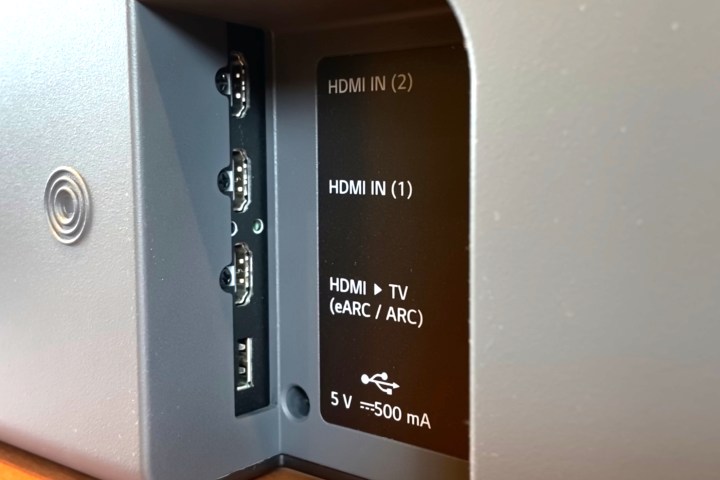
The number and kinds of inputs and outputs on a soundbar directly affect how you’ll be able to use it — and may even affect your other devices.
For instance: It’s not unusual for soundbars to have only one HDMI port, which you’ll use to connect to your TV. But that means you’re sacrificing one of your TV’s HDMI ports, and the soundbar isn’t giving you a replacement HDMI input. If your TV only has four ports (some have fewer), you’re now down to three connected devices. Is that enough?
Another scenario that’s quite common is a soundbar that comes with HDMI, analog, and digital optical ports, which you might assume means up to three devices can be connected. Sometimes that’s true. But sometimes, each of these ports are meant as TV connection alternatives — which means that once you connect your TV to one of them, the others are superfluous.
When a speaker comes with one or more HDMI inputs, what formats do these ports support? You might not need full HDMI 2.1 compatibility if you’re a movie buff, but gamers will likely care a great deal about advanced features like variable refresh rate (VRR) and 120Hz or better support for 4K gaming. HDR passthrough of HDR10, Dolby Vision, and HDR10+ are also considerations we’ll address.
Wireless connections

Almost all soundbars give you the ability to connect a phone via Bluetooth — you can bet we’ll mention it if they don’t — but some go further, with built-in Wi-Fi or Ethernet. With these connections, you’ll be able to do more with your speaker, like playing music directly from streaming music services for better sound than Bluetooth. Wi-FI also enables things like Apple’s AirPlay 2, Google’s Chromecast built-in, and Amazon Alexa compatibility. Sometimes, a Wi-Fi-connected soundbar can do double duty as a smart speaker, and it’s becoming increasingly common to see these speakers work within a multiroom audio system like Google Home or Apple Home.
These are all fantastic extras if you find them useful, but there can be a distinct difference between what’s promised by the marketing lingo and the actual performance at home. Is the setup process complicated? Is the included app a usability nightmare? Is there a chance your favorite streaming service isn’t supported? We explore every nook and cranny to find out.
Advanced features

In some cases, a soundbar has certain features that only work with a matching TV. Samsung, for instance, offers wireless Dolby Atmos on select 2023 soundbars, but it only works with a compatible Samsung TV. LG, Samsung, and Sony also provide synchronization between their soundbars and their TV’s built-in speakers — again, on compatible devices.
We don’t always have access to both sides of the TV/soundbar combination so there will be times when we can’t test every feature a soundbar offers. However, we’ll make sure that you know about them and what the manufacturer claims you’ll get if you go down that road.
Sound quality
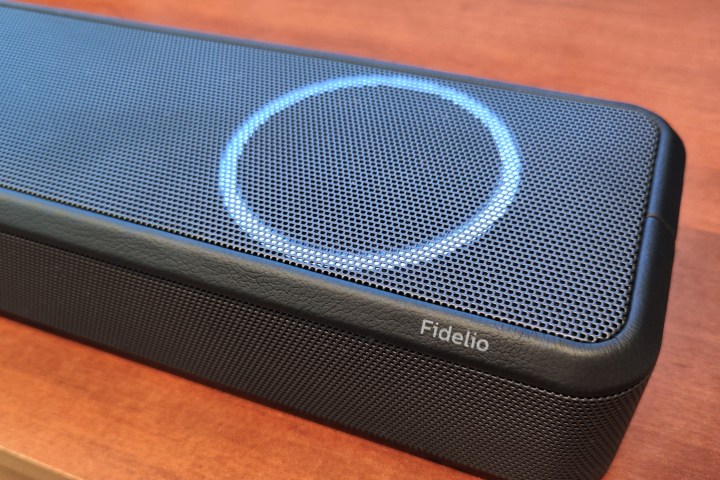
This is the main event. We evaluate a soundbar’s sound by playing a variety of visual content — movies, TV shows, and sports events — from a variety of sources, including streaming services like Netflix and Disney+, Blu-ray discs, and cable or satellite TV. We’ll often also throw in some YouTube videos for good measure. We also play straight-up music — after all, if a soundbar is going to be your TV room’s main speaker, we’re guessing you’d like it to be good for music too.
For video content, a chief concern is dialogue clarity. In today’s world of awesome multichannel soundtracks for both TV shows and movies, clear speech can sometimes fall victim to all of the other sounds. The responsibility for keeping it intelligible is partly on the sound engineers who mix the soundtrack, but it’s also up to your soundbar to process the audio in such a way that the all-important center channel is well-isolated from the rest of the tracks and that voices are given an appropriate volume level.
Suffice it to say, not all soundbars succeed at this task. We’ll tell you when it’s a problem and we’ll also explore if the speaker has any built-in dialogue adjustments that might help.
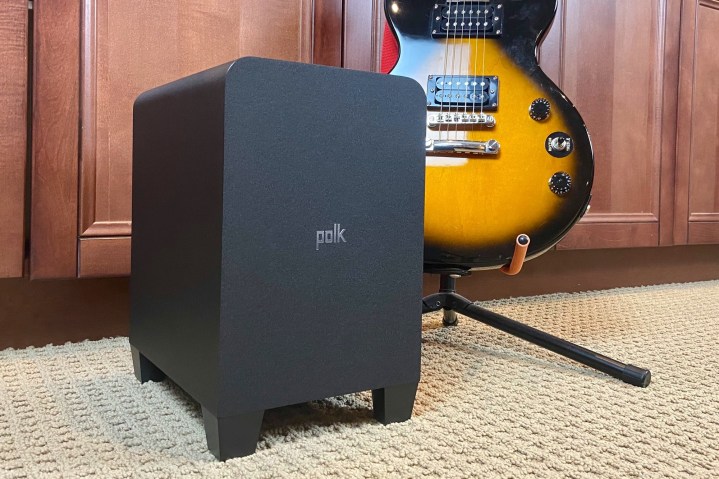
Because soundbar cabinets tend to be small so they can fit in front of or under your TV, they may not possess the large-diameter drivers needed to produce deep bass. This is why many models ship with dedicated wireless subwoofers. We’ll tell you how the speaker handles bass from several perspectives. Does it give you that cinematic rumble for explosions and other on-screen action? If so, are we talking about mild, medium, or shake-the-sofa power? How does the bass translate to music listening? Does it overwhelm, or is it well-balanced with the other frequencies? And how does it actually sound? Some low-end bass can be surprisingly articulate — almost musical — while others just sound like someone is repeatedly smacking a big, wet cardboard box with a mallet.
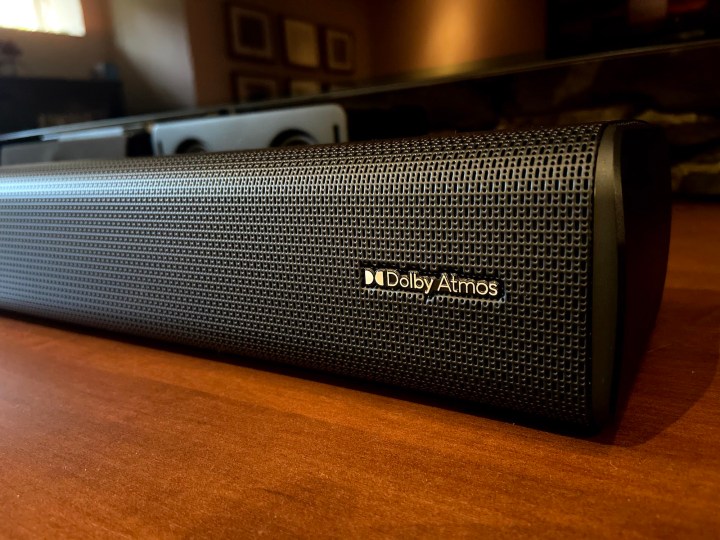
If a soundbar supports Dolby Atmos or DTS:X, our expectation is that we should be able to get a strong sense of 3D immersion when watching movies or listening to music that uses these formats. You may think that the presence of the Dolby Atmos logo on the box is a guarantee that this will be true, but trust us, it isn’t.
Many speakers bearing the Dolby Atmos logo use software to “virtualize” the many channels included in an Atmos soundtrack, which means that instead of having dedicated drivers to bounce the sound over your head or to the sides, they simulate these effects using a much smaller array of drivers (sometimes as few as two).
Needless to say, the effectiveness of this technique varies widely from soundbar to soundbar. We’ll let you know where a specific model sits on that spectrum. But even soundbars with dedicated drivers and included surround sound speakers can struggle to produce a realistic 3D Atmos sound.
To determine which models will put you in the center of the action and which ones won’t, we torture-test each soundbar with some of the most demanding Dolby Atmos scenes from leading Hollywood blockbusters — everything from Denis Villeneuve’s Dune to Mad Max: Fury Road to select titles from the Marvel and Star Wars catalogs.
Then we repeat the process with Dolby Atmos Music tracks from Apple Music, Amazon Music, and Tidal, to see if the speaker is as adept at handling 3D music.
Settings and general usability
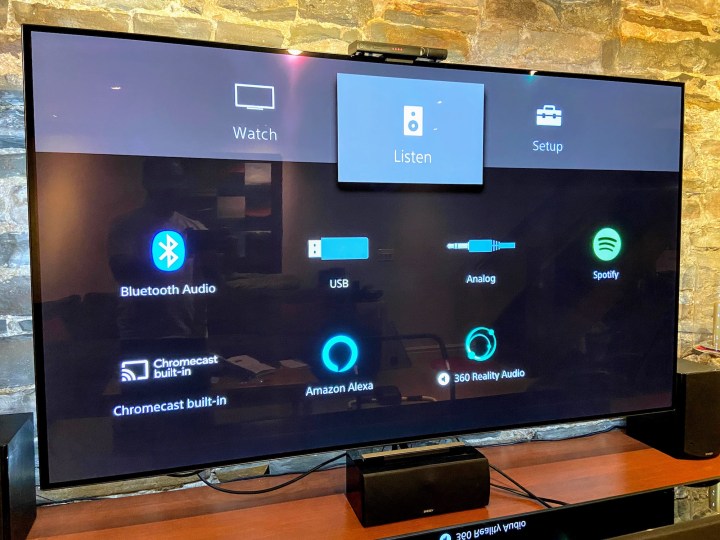
Sound, especially for discerning listeners, is a very subjective thing. If you love the sound of a soundbar right out of the box, that’s awesome. But for some folks, a bit of tweaking is inevitable to get things dialed in the way they like it. However, because the soundbar category as a whole is focused on simplicity, many models lack the kind of sophisticated EQ and tone controls found on dedicated AV receivers. We’ll take note of which settings are available and whether they provide useful and noticeable changes to the sound.
Accessing deeper settings can be especially important for Dolby Atmos models. Ceiling heights can vary widely, so being able to adjust the volume level of just the height channels can make the difference between hearing overhead sounds or not.
Generally speaking, the more sophisticated the settings, the more likely they are to only be accessible via a companion app on a smartphone or tablet. The one exception is Sony, which offers a great on-screen interface from your TV. Regardless of whether you use an app, the TV, or the included remote, we’ll comment on how easy it is to get to and adjust the available settings.

Once everything is said and done, we’ll wrap up our review with a score out of five stars and summarize our findings with a set of pros and cons. If a soundbar strikes us as well worth the money, it will earn our Recommended Product award. If it’s an absolute knockout, we’ll give it our Editor’s Choice award. As with all of our product reviews, a soundbar doesn’t have to cost thousands to earn these forms of praise — in fact, the more a company charges for a soundbar, the higher the bar becomes.
Hopefully, this overview helps explain how we evaluate soundbars. But if we’ve missed something that you think should be included, feel free to let us know — our review methods, just like the products we evaluate, are always being refined and improved.



